-
 Bitcoin
Bitcoin $114500
-0.31% -
 Ethereum
Ethereum $3648
1.11% -
 XRP
XRP $3.033
-0.27% -
 Tether USDt
Tether USDt $0.9999
-0.01% -
 BNB
BNB $758.5
-0.32% -
 Solana
Solana $167.5
1.48% -
 USDC
USDC $0.9998
-0.02% -
 TRON
TRON $0.3331
0.74% -
 Dogecoin
Dogecoin $0.2039
0.25% -
 Cardano
Cardano $0.7419
-0.46% -
 Hyperliquid
Hyperliquid $39.21
2.66% -
 Stellar
Stellar $0.4049
-1.95% -
 Sui
Sui $3.483
-0.56% -
 Bitcoin Cash
Bitcoin Cash $570.8
2.89% -
 Chainlink
Chainlink $16.67
-0.57% -
 Hedera
Hedera $0.2470
-1.57% -
 Ethena USDe
Ethena USDe $1.001
0.00% -
 Avalanche
Avalanche $22.36
1.52% -
 Litecoin
Litecoin $123.4
4.35% -
 UNUS SED LEO
UNUS SED LEO $8.989
0.09% -
 Toncoin
Toncoin $3.324
-2.40% -
 Shiba Inu
Shiba Inu $0.00001219
-1.30% -
 Uniswap
Uniswap $9.811
2.54% -
 Polkadot
Polkadot $3.662
-0.07% -
 Monero
Monero $295.5
-3.85% -
 Dai
Dai $1.000
0.01% -
 Bitget Token
Bitget Token $4.345
0.24% -
 Cronos
Cronos $0.1380
0.95% -
 Pepe
Pepe $0.00001044
-1.14% -
 Ethena
Ethena $0.5981
-4.24%
How to understand the difference between Web3 and the current Internet?
Web3 aims to decentralize the internet, giving users control over their data and enhancing privacy through blockchain technology, unlike the centralized Web2.
Apr 11, 2025 at 10:15 pm
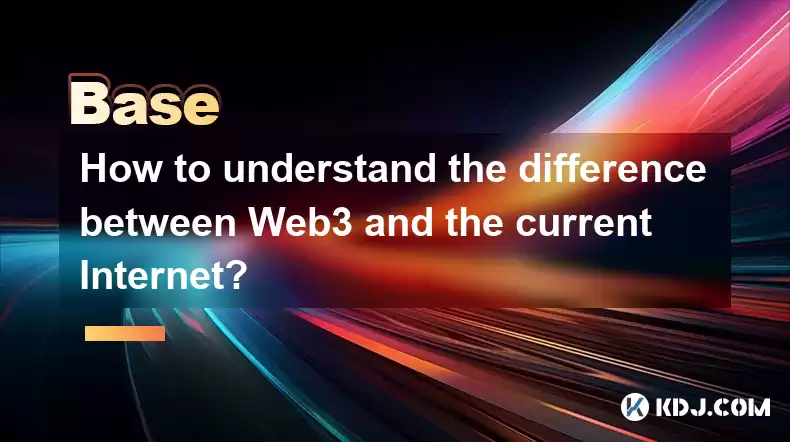
Understanding the difference between Web3 and the current Internet involves delving into the evolution of the internet, the core principles of Web3, and the practical implications of these differences. The current internet, often referred to as Web2, has been the dominant model for the past two decades. In contrast, Web3 represents a new paradigm that aims to decentralize the internet and give more control back to users. Let's explore these differences in detail.
The Evolution of the Internet
The internet has undergone significant transformations since its inception. Web1, the first generation of the internet, was primarily a read-only platform where users could access static websites. This era was characterized by limited interactivity and user engagement. Web2, the current generation, introduced dynamic content, social media, and user-generated content, transforming the internet into a read-write platform. This shift allowed for greater user interaction but also led to the centralization of data and power in the hands of a few tech giants.
Core Principles of Web3
Web3, often referred to as the decentralized web, is built on several core principles that distinguish it from Web2. Decentralization is at the heart of Web3, aiming to distribute control and data across a network of nodes rather than central servers. This is achieved through the use of blockchain technology, which enables secure, transparent, and immutable transactions. User sovereignty is another key principle, emphasizing that users should have control over their data and digital identity. Interoperability is also crucial, allowing different applications and services to work seamlessly together without the need for intermediaries.
Decentralization vs. Centralization
One of the most significant differences between Web3 and the current internet is the approach to data management. In Web2, data is typically stored on centralized servers controlled by large corporations. This centralization can lead to issues such as data breaches, privacy violations, and censorship. In Web3, data is stored on a decentralized network of nodes, reducing the risk of single points of failure and enhancing security and privacy. This shift also empowers users by giving them more control over their data and reducing reliance on centralized entities.
User Sovereignty and Digital Identity
Web3 places a strong emphasis on user sovereignty, which means users have greater control over their digital identity and data. In Web2, users often have to rely on third-party services to manage their identities and data, which can lead to privacy concerns. In Web3, users can use decentralized identity solutions, such as self-sovereign identity (SSI), to manage their digital identities securely and privately. This approach allows users to share only the necessary information with services and applications, enhancing privacy and reducing the risk of data misuse.
Interoperability and Open Standards
Interoperability is another key difference between Web3 and the current internet. In Web2, different platforms and services often operate in silos, making it difficult for users to move their data and identities between them. Web3 aims to break down these silos by promoting open standards and protocols that allow different applications and services to work together seamlessly. This interoperability can lead to a more cohesive and user-friendly internet experience, where users can easily switch between different services without losing their data or digital identity.
Practical Implications of Web3
The practical implications of Web3 are far-reaching and can impact various aspects of the internet and digital life. In the realm of finance, Web3 enables the creation of decentralized finance (DeFi) applications that allow users to access financial services without traditional intermediaries. This can lead to more inclusive and accessible financial systems. In the realm of content creation, Web3 can empower creators by allowing them to monetize their work directly through decentralized platforms, reducing the need for intermediaries and giving creators more control over their earnings. Additionally, Web3 can enhance privacy and security by reducing the reliance on centralized data storage and promoting the use of encryption and other security measures.
Challenges and Considerations
While Web3 offers many potential benefits, it also comes with its own set of challenges and considerations. Scalability is a significant challenge, as decentralized networks can struggle to handle the same level of traffic and transactions as centralized systems. User experience is another consideration, as decentralized applications (dApps) can sometimes be more complex and less user-friendly than their centralized counterparts. Regulatory uncertainty is also a factor, as governments and regulatory bodies are still grappling with how to approach decentralized technologies. Despite these challenges, the potential benefits of Web3 make it an exciting and promising development in the evolution of the internet.
Frequently Asked Questions
Q: How does Web3 impact data privacy?
A: Web3 enhances data privacy by decentralizing data storage and giving users more control over their information. Through the use of blockchain technology and decentralized identity solutions, users can manage their data securely and share only what is necessary with services and applications.
Q: Can Web3 coexist with Web2?
A: Yes, Web3 can coexist with Web2. Many proponents of Web3 believe that the transition to a decentralized web will be gradual, with both models operating alongside each other. Users can choose to use Web3 applications for certain tasks while still relying on Web2 services for others.
Q: What are some examples of Web3 applications?
A: Some examples of Web3 applications include decentralized finance (DeFi) platforms like Uniswap and Compound, decentralized social networks like Mastodon, and decentralized content platforms like LBRY and Theta. These applications leverage blockchain technology to offer decentralized alternatives to traditional services.
Q: How can someone get started with Web3?
A: To get started with Web3, individuals can begin by exploring decentralized applications (dApps) and learning about blockchain technology. Setting up a cryptocurrency wallet, such as MetaMask, is a good first step, as it allows users to interact with dApps and manage their digital assets. Participating in online communities and forums dedicated to Web3 can also provide valuable insights and resources.
Disclaimer:info@kdj.com
The information provided is not trading advice. kdj.com does not assume any responsibility for any investments made based on the information provided in this article. Cryptocurrencies are highly volatile and it is highly recommended that you invest with caution after thorough research!
If you believe that the content used on this website infringes your copyright, please contact us immediately (info@kdj.com) and we will delete it promptly.
- Meme Coins Skyrocket: Is Dogecoin About to Be Dethroned?
- 2025-08-06 03:50:13
- Tether's On-Chain Surge: USDT Dominates and Drives Blockchain Fees
- 2025-08-06 02:50:13
- Bitcoin, Treasury, Country: Bolivia Follows El Salvador's Lead, While TON Strategy Co. Makes Waves
- 2025-08-06 03:50:13
- Succinct's PROVE Token & Mainnet Launch: A New Era for ZK Proofs
- 2025-08-06 02:50:13
- CEA Industries Rebrands as BNB Network Company: A New Era for BNB Treasury
- 2025-08-06 03:55:14
- Terra Classic's Market Module Revival: The v3.5.0 Upgrade and What It Means for LUNC
- 2025-08-06 02:30:12
Related knowledge
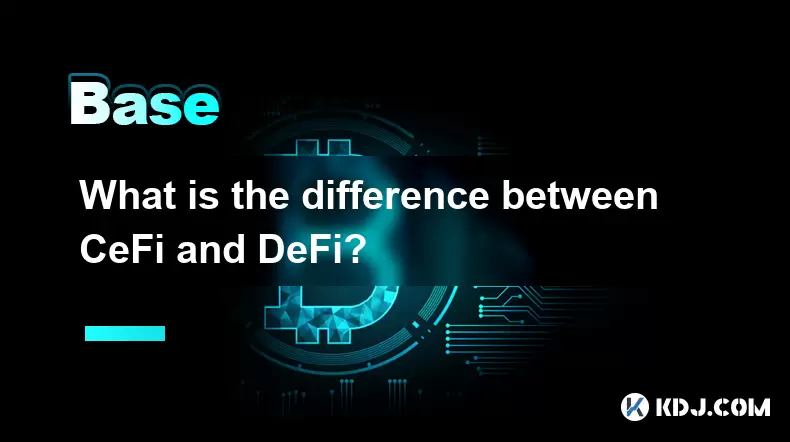
What is the difference between CeFi and DeFi?
Jul 22,2025 at 12:28am
Understanding CeFi and DeFiIn the world of cryptocurrency, CeFi (Centralized Finance) and DeFi (Decentralized Finance) represent two distinct financia...
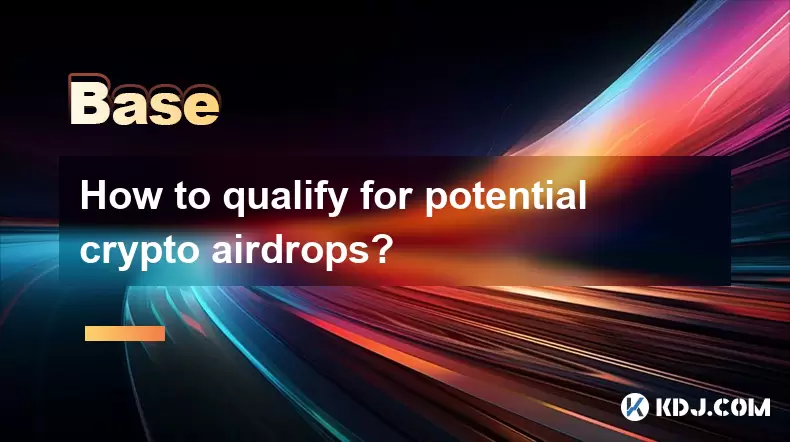
How to qualify for potential crypto airdrops?
Jul 23,2025 at 06:49am
Understanding What Crypto Airdrops AreCrypto airdrops refer to the distribution of free tokens or coins to a large number of wallet addresses, often u...
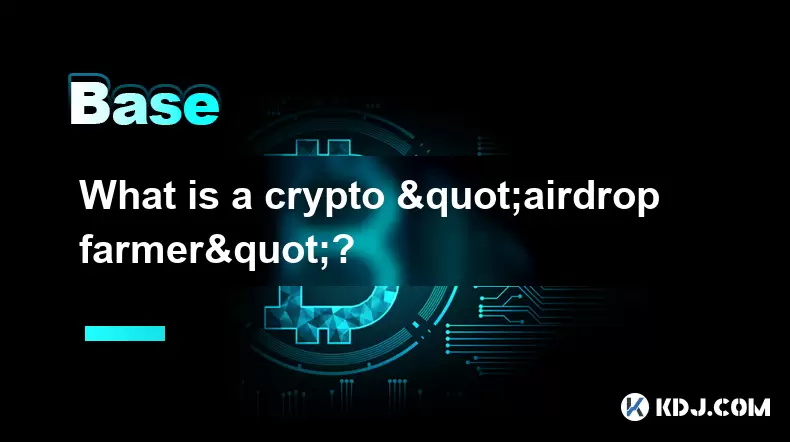
What is a crypto "airdrop farmer"?
Jul 24,2025 at 10:22pm
Understanding the Role of a Crypto 'Airdrop Farmer'A crypto 'airdrop farmer' refers to an individual who actively participates in cryptocurrency airdr...
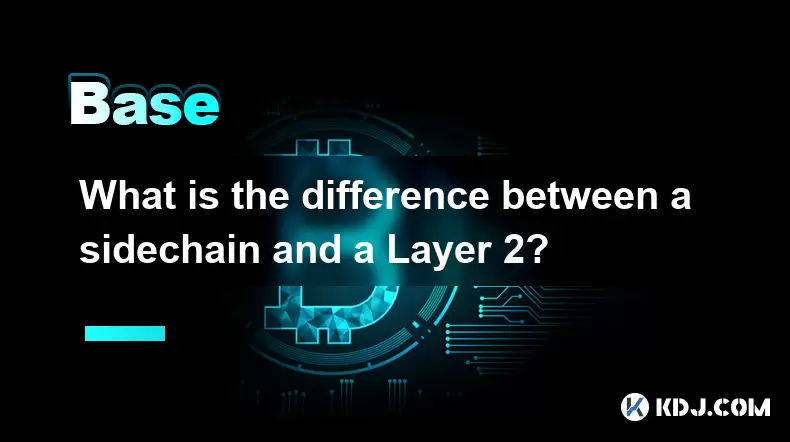
What is the difference between a sidechain and a Layer 2?
Jul 20,2025 at 11:35pm
Understanding the Concept of SidechainsA sidechain is a separate blockchain that runs parallel to the main blockchain, typically the mainnet of a cryp...
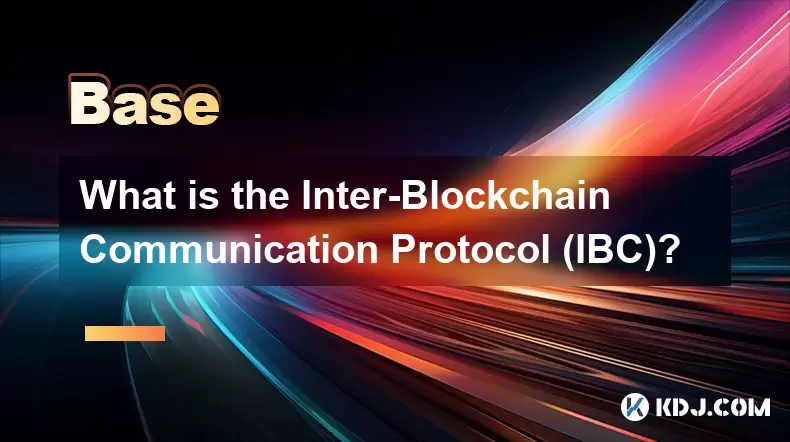
What is the Inter-Blockchain Communication Protocol (IBC)?
Jul 19,2025 at 10:43am
Understanding the Inter-Blockchain Communication Protocol (IBC)The Inter-Blockchain Communication Protocol (IBC) is a cross-chain communication protoc...
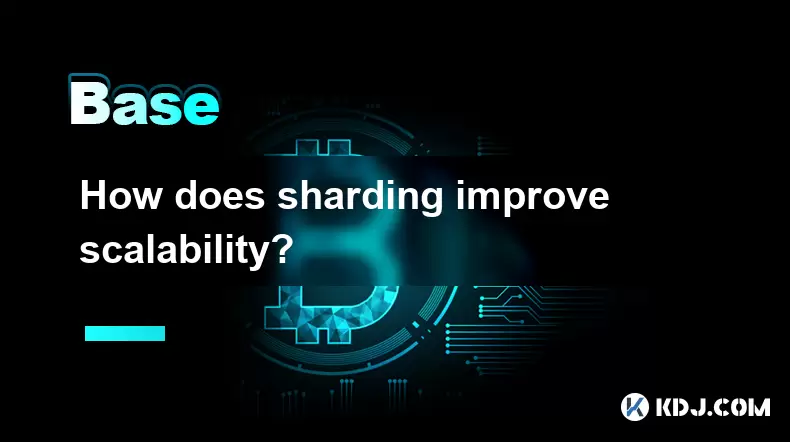
How does sharding improve scalability?
Jul 20,2025 at 01:21am
Understanding Sharding in BlockchainSharding is a database partitioning technique that is increasingly being adopted in blockchain technology to enhan...

What is the difference between CeFi and DeFi?
Jul 22,2025 at 12:28am
Understanding CeFi and DeFiIn the world of cryptocurrency, CeFi (Centralized Finance) and DeFi (Decentralized Finance) represent two distinct financia...

How to qualify for potential crypto airdrops?
Jul 23,2025 at 06:49am
Understanding What Crypto Airdrops AreCrypto airdrops refer to the distribution of free tokens or coins to a large number of wallet addresses, often u...

What is a crypto "airdrop farmer"?
Jul 24,2025 at 10:22pm
Understanding the Role of a Crypto 'Airdrop Farmer'A crypto 'airdrop farmer' refers to an individual who actively participates in cryptocurrency airdr...

What is the difference between a sidechain and a Layer 2?
Jul 20,2025 at 11:35pm
Understanding the Concept of SidechainsA sidechain is a separate blockchain that runs parallel to the main blockchain, typically the mainnet of a cryp...

What is the Inter-Blockchain Communication Protocol (IBC)?
Jul 19,2025 at 10:43am
Understanding the Inter-Blockchain Communication Protocol (IBC)The Inter-Blockchain Communication Protocol (IBC) is a cross-chain communication protoc...

How does sharding improve scalability?
Jul 20,2025 at 01:21am
Understanding Sharding in BlockchainSharding is a database partitioning technique that is increasingly being adopted in blockchain technology to enhan...
See all articles

























































































